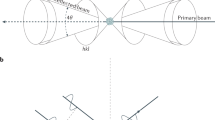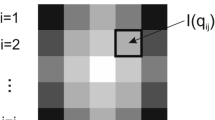Abstract
IN 1923 Harkins and Ryan developed a simple method (NATURE, 112, 54; J. Am. Chem. Soc., 45, 2095) for obtaining a knowledge of what occurs when an atom disintegrates. This consisted of the use of very fast -rays, such as those of thorium or radium-C, in a modified Wilson (Shimizu) ray track apparatus, and the photography of an extremely large number of tracks. By the use of these fast rays, about 20,000 photographs in air and 21,000 in argon were obtained. Each photograph gave two views at right angles. That Wilson's apparatus had not been applied earlier for this purpose was undoubtedly due to the fact that it had previously seemed almost hopeless to obtain sufficient photographs.
This is a preview of subscription content, access via your institution
Access options
Subscribe to this journal
Receive 51 print issues and online access
$199.00 per year
only $3.90 per issue
Buy this article
- Purchase on Springer Link
- Instant access to full article PDF
Prices may be subject to local taxes which are calculated during checkout
Similar content being viewed by others
Rights and permissions
About this article
Cite this article
HARKINS, W., SHADDUCK, H. The Synthesis and Disintegration of Atoms as Revealed by the Photography of Wilson Cloud Tracks. Nature 118, 875–876 (1926). https://doi.org/10.1038/118875a0
Issue Date:
DOI: https://doi.org/10.1038/118875a0
Comments
By submitting a comment you agree to abide by our Terms and Community Guidelines. If you find something abusive or that does not comply with our terms or guidelines please flag it as inappropriate.



